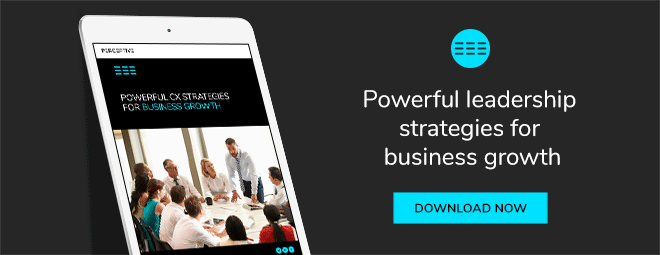A big, re-occurring question for customer experience management (CEM) is how do you prove your return on investment? This is where CEM gets sexy. And let’s face it, what’s more alluring than ROI?
Improving your customer experience can have a significant effect on revenue growth. Research1 shows that there’s 10 to 15 per cent potential revenue increase from customer journey improvement i.e. improving the customers experience from start to end. Interestingly, it also shows that this can be achieved while also lowering the cost to serve 15 to 20 per cent.
Read more: The common pitfalls of customer experience management
Fix your leaky bucket
How to ensure revenue and cut costs at the same time? Often we see companies with inefficiencies that create duplications in process, poor standardisation that creates confusion for all stakeholders and slows down processes that are there to serve as efficient. Instead creating the opposite. In this scenario both the company and the customer suffers.
For example, a call centre can answer a call and fix the symptom of the issue, but not the root cause, which means the issue will reoccur again and again, with a big risk that no-one will ever know what the root cause actually is.
Related content: The pitfalls of customer experience management
Knowledge is power
You really just need to know your current market position, where you’re going wrong and what you’re doing right, to know where the issues are and how to solve them. Focus on what matters, concentrate your efforts there, and really invest in nutting out your issues in terms of the what, how, when, who and why.
HubSpot have understood this approach, and their view is to build a business by optimising the customers experience, thereby the revenue side takes care of itself.
Three steps to action now
1. Responsibility – There’s an “I” in TEAM after all
An issue with transforming customer journeys is often that there is rarely one person who carries responsibility for the whole customer experience. Many larger companies are therefore employing customer experience officers or executives as they recognise the need to take charge and drive leadership in this crucial area.
2. Know where your bottlenecks are
Map your customer journey and understand how your customer experience looks from beginning to end, in order to get a holistic view of where things are to know what to fix. Create a customer journey map and attack the issue from all angles by undertaking qualitative and quantitative research. Which brings us on to our next point…
3. What’s occurring?
Understand your customer feedback and take charge. Knowing where the business falls short by listening to your customers, knowing what you can do to improve and being able to save the customers most likely to leave you, is what will make the greatest impact on your business.
Survey to get actionable insights
In order to know what the current state of your customer experience is, the natural step is to conduct some form of research, often in the form of a customer satisfaction survey. Getting strategic, actionable insights will mean that your customer feedback survey will pay for itself in the long run, and you’ll able to make solid business decisions based on the insights provided.
The monetary return on investment from managing your customer experience comes from being able to draw valuable, highly strategic insights from the data—and know what you need to improve in your business to secure customer retention. Capturing customer feedback means nothing if you can’t do anything actionable with it.
The magic lies in how you actually leverage the information that transpires, and how you follow up with your most unhappy customers and thereafter engage them.
Managing customer experience doesn’t have to be expensive. If your customer experience is delivering excellence, then your company should reap the rewards by noticing increased customer retention levels and a boost in your customer referrals.
Want to learn more? Get our free eBook Powerful Leadership Strategies for Business Growth.
1. McKinsey & Company 2014.
